Fabric Lampshade Custom
Custom Square Lamp Harp for Every Need
—As one of the important elements in indoor decoration, fabric lampshade has significant aesthetic value.
—Through reasonable color matching, shape, and pattern matching, not only can the aesthetic and artistic value of fabric lampshades be increased, but also the entire indoor environment can be made more harmonious and beautiful.
—However, when choosing patterns and colors, it is necessary to follow the consistency of the overall style and avoid being too abrupt and uncoordinated.
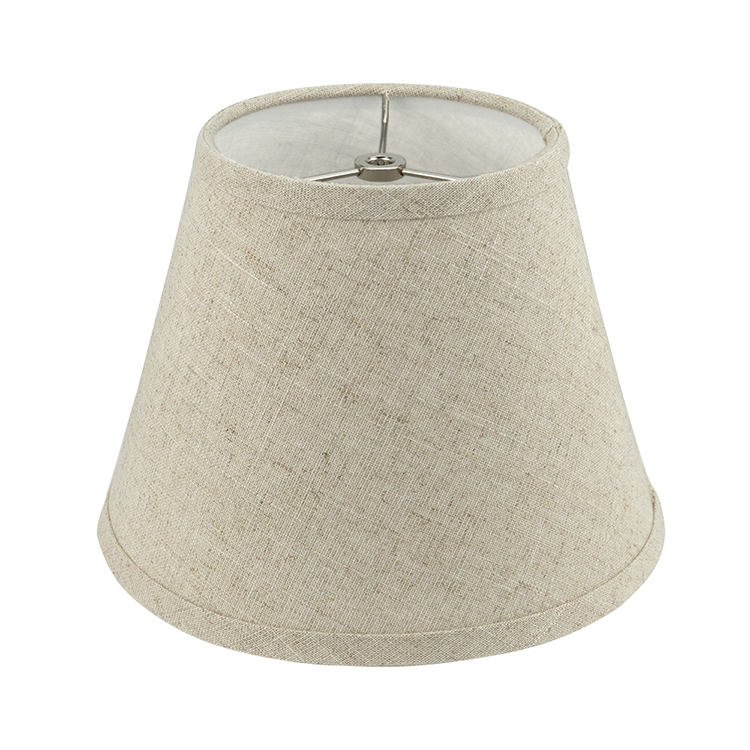
Custom Fabric Lampshade Color
We provide four different color of fabric lampshade customization, including blue color、white color、black color,grey color and so on. The factory uses advanced technology and strict quality control to manufacture personalized fabric lampshade. Our team can customize according to your requirements and designs, providing high quality, durable and reasonably priced products and services. If you need a custom-made lamp harps, please contact us and we will provide you with the best solution.
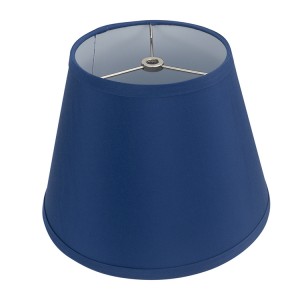
blue color
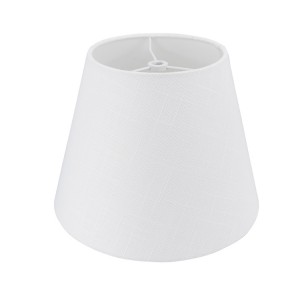
white color
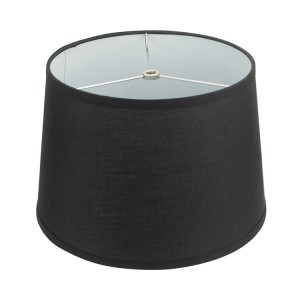
black color
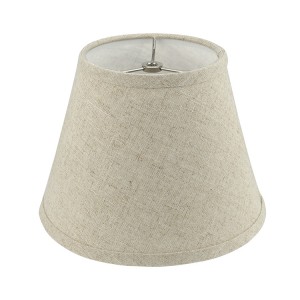
grey color
Expert Purchase, Competitive Price
-- Our Unmatched Advantage
Frequently Asked Questions?
To measure the size of a lampshade, use a tape measure or ruler, then follow these steps:
- Measure the diameter of the lampshade - Use a ruler or tape measure to measure the widest point of the lampshade from one edge to the other, this is the diameter of the lampshade.
- Calculate the circumference of the lampshade - Multiply the diameter of the lampshade by π (approximately equal to 3.14) to get the circumference of the lampshade.
- Measure the height of the lampshade - Use a ruler or tape measure to measure the height of the lampshade, from the bottom to the top.
- Measure the top diameter of the lampshade (if necessary) - If there is a circle with a smaller diameter on the top of the lampshade, you need to use a ruler or tape measure to measure the width of this circle, which is the top diameter of the lampshade.
Once you have all the dimensions measured, record them so you can purchase the lamp base and shade that will fit. Note that when choosing a lampshade, the size should be suitable for the lamp holder, otherwise it will cause unstable installation or uneven light.
To remove a lampshade from a lamp, follow these steps:
- Turn off the lamp and unplug it to avoid electrical shock.
- Gently twist the lampshade counterclockwise to loosen it from the lamp socket. Some lampshades may have a screw that needs to be loosened instead.
- Carefully lift the lampshade off the lamp socket and set it aside.
- If the lampshade is stuck, try gently shaking and tilting it to loosen it from the socket.
- Once the lampshade is removed, inspect the socket to ensure it is clean and undamaged. If necessary, clean the socket with a soft cloth or brush.
6. To replace the lampshade, simply position it back over the lamp socket, lining up the notches or screws if applicable, and twist it clockwise to secure it in place.
Choosing the right lampshade can enhance the overall look and feel of your space. Here are some tips for choosing the right lampshade:
- Consider the size of the lamp: The size of the lampshade should be proportional to the size of the lamp. A small lamp needs a small lampshade and a large lamp needs a large lampshade. As a general rule, the lampshade should be approximately two-thirds the height of the lamp base.
- Think about the purpose of the lamp: If the lamp is intended for reading or task lighting, look for a lampshade that directs light downwards, such as a drum or cone-shaped shade. If the lamp is for ambience or mood lighting, consider a softer, diffused shade like a pleated or bell-shaped shade.
- Consider the style of the lamp and room: The style of the lampshade should complement the style of the lamp and the decor of the room. For example, a modern lamp would pair well with a sleek, minimalist shade, while an antique lamp would look best with a traditional, ornate shade.
- Look at the color of the lamp and room: Choose a lampshade that complements or contrasts with the color scheme of the room. For a cohesive look, consider choosing a shade that matches the color of the lamp base or other accents in the room.
5. Think about the material of the lampshade: Different materials give off different levels of light and texture. Paper or fabric shades produce a softer light, while glass or metal shades produce a more direct light. Additionally, textured materials like burlap or linen can add visual interest to a space.
The most common lampshades are:
- Empire shades: These are cone-shaped shades that are slightly flared at the bottom. They are versatile and work well in a variety of settings.
- Drum shades: These are cylindrical-shaped shades that have straight sides and flat tops and bottoms. They are great for modern and contemporary spaces.
- Bell shades: These are flared, rounded shades that resemble a bell. They are traditional and work well with antique lamp styles.
- Square shades: These shades are shaped like a cube or rectangle and are modern and contemporary.
- Coolie shades: These are shallow, cone-shaped shades that are great for providing downward-directed light. They are often used in task lighting.
- Tiffany-style shades: These are made from stained glass and are often embellished with intricate designs. They are great for adding color and personality to a space.
7. Uno shades: These are shades that have a small washer-like fitting that screws onto the top of the lamp socket. They are often used for floor lamps and can be difficult to find replacements for.These are just a few of the most common lampshades and there are many variations available within each style.
The common materials for lampshades include:
- Fabric: Lampshades made of fabric are versatile and come in a variety of patterns and textures. Cotton, linen, silk, and polyester are commonly used fabrics for lampshades.
- Paper: Lampshades made of paper are lightweight and inexpensive. They are great for temporary use or for a modern and minimalist look.
- Glass: Lampshades made of glass are elegant and can add a touch of glamour to a space. They can also come in stained glass or frosted glass for a unique look.
- Metal: Lampshades made of metal are sturdy and can work well with industrial or rustic decor styles. Copper, brass, and iron are commonly used metals for lampshades.
- Plastic: Lampshades made of plastic are durable and lightweight. They are often used in children's rooms or outdoor spaces.
6. Wood: Lampshades made of wood are natural and rustic. They can add warmth and texture to a space.The choice of material for a lampshade depends on personal preference, the style of the lamp, and the decor of the room.
Here are some tips for maintaining lampshades:
- Dusting: Use a soft, dry cloth or a feather duster to regularly dust the lampshade. Avoid using water or cleaning products as it can damage the material.
- Vacuuming: If your lampshade is made of fabric, you can use a vacuum cleaner to gently remove any dust or dirt. Use the upholstery attachment and set the vacuum to low power.
- Spot cleaning: If your lampshade gets soiled, you can spot clean it using a clean, damp cloth and a mild detergent. Gently rub the affected area and then wipe with a clean cloth.
- Avoid direct sunlight: Avoid exposing your lampshade to direct sunlight as it can fade or discolour the material.
5. Change bulbs carefully: When changing bulbs, avoid touching the lampshade with your hands as the oils from your skin can damage some materials. Use a cloth or gloves to handle the lampshade instead.By following these simple tips, you can help to keep your lampshade looking clean and in good condition for many years to come.





